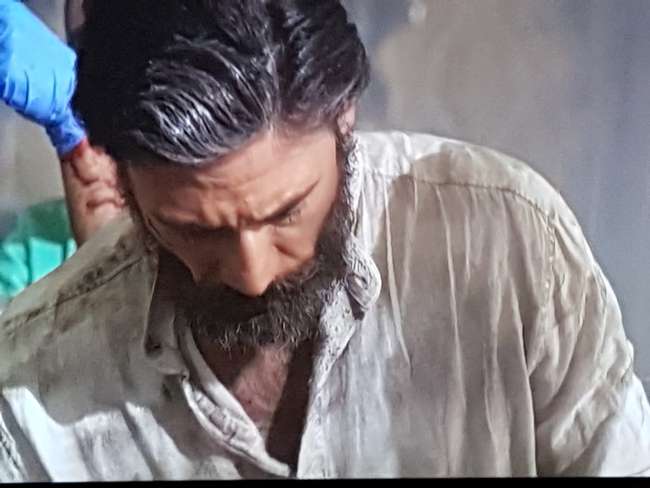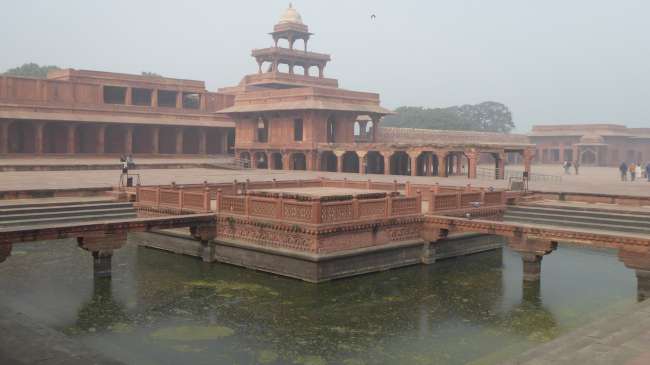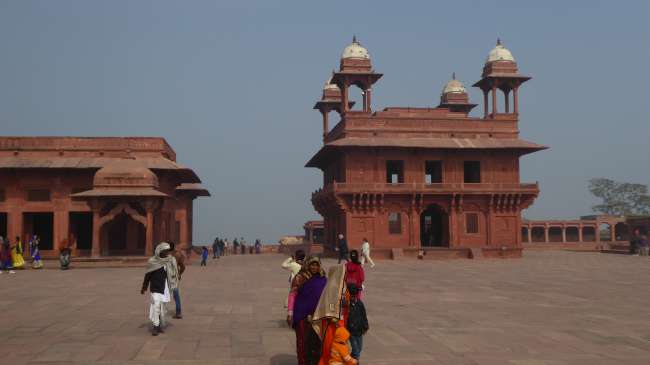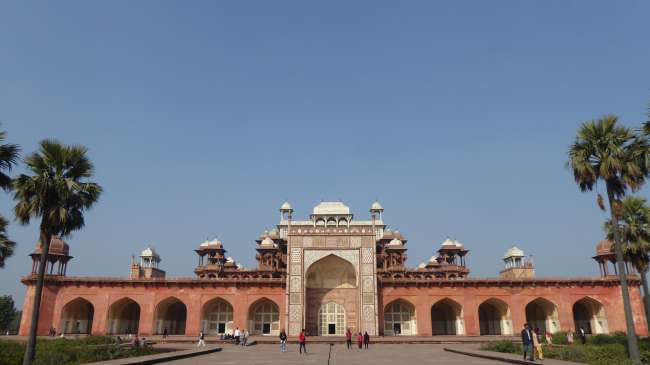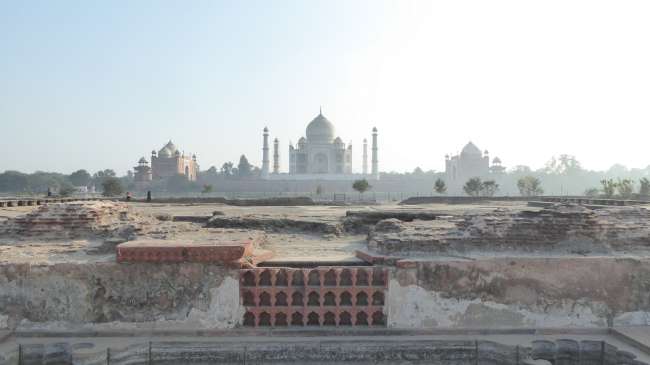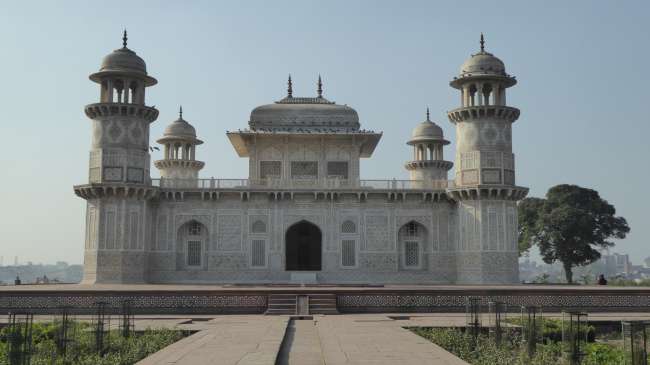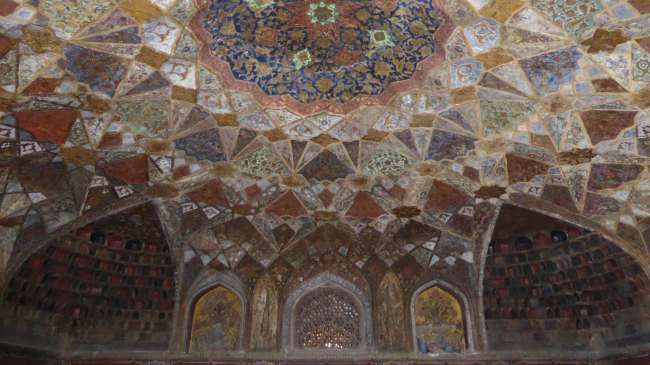Don Curry in the Harem
Გამოქვეყნდა: 18.01.2017
Გამოიწერეთ Newsletter
Don Curry sometimes imagines living in a different time. How exciting it would be to travel with Alexander halfway around the world. Or to explore the South Seas with James Cook. He would also have liked to make the Mona Lisa smile behind Leonardo da Vinci's back or sell platform shoes to Napoleon. In any case, it is easy for him to imagine himself in long past eras.
The day started with dense fog, as if the veil of the past had covered the whole land. The breakfast buffet was also a thing of the past. Since Don Curry didn't have to leave until 10:30 a.m. today, he went to the hotel restaurant accordingly late; the buffet had already been cleared away, but Don Curry was able to order an American breakfast à la carte.
Satisfied, he checked out and entrusted himself entirely to Mr. Sanjay and the fog. The former could possibly also use his horn as an echo sounder.
The only official destination today was Fatehpur Sikri, the former capital of the Great Mogul Akbar, which was abandoned after only a few years and still remains an excellently preserved ghost town to this day. Mr. Khan, who was freezing heavily, was already waiting there to accompany and guide Don Curry from here to Agra. Together, they trudged through the billowing fog that surrounded the massive walls of the city. Don Curry couldn't imagine a better atmosphere for a ghost town.
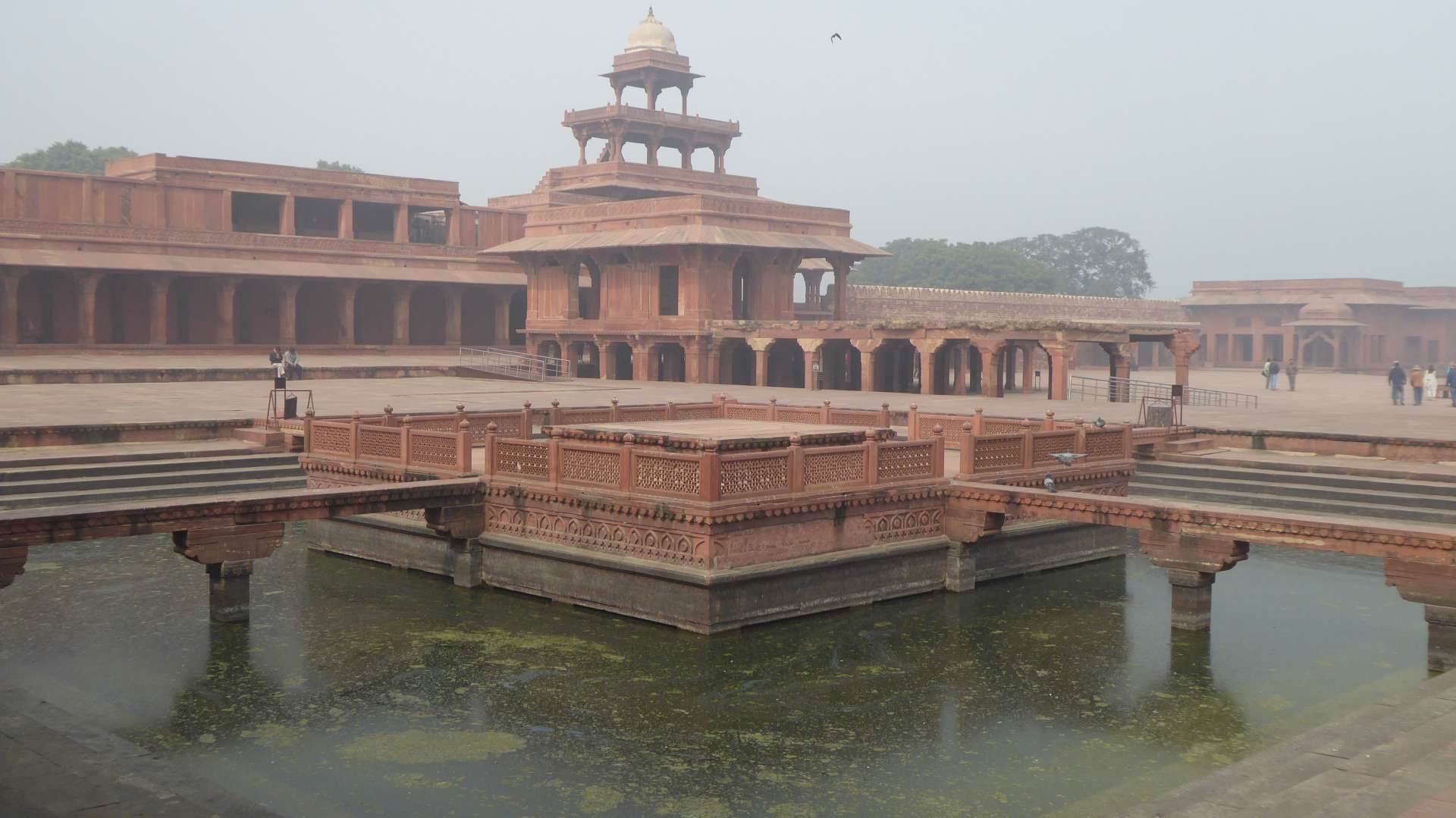
Reluctantly, Mr. Khan rattled off a lot of numbers about the history of the construction and the Mogul rulers in general. Only later in the day would he start to thaw and enjoy Don Curry's genuine interest. Don Curry, on the other hand, thawed much earlier - partly because of the magnificent red sandstone buildings, some of which had grandiose decorations, and partly because of the emerging sun, which knew how to breathe new life into the ghost town itself.
Meanwhile, Mr. Khan enjoyably told stories about Akbar's many wives and his 360 concubines. Accordingly, the harem buildings were the most extensive in the entire palace complex. The secret door to Akbar's bedroom was cleverly designed so that no one except him could know who was spending the night with him - incidentally, in a stone bed that surpassed the size of many hotel rooms. However, Don Curry wondered how one could cope with such a multitude of women in general.
The five-story dance pavilion, the gigantic kitchen, and the palace of Akbar's favorite wife with well-preserved wall paintings were among the other highlights of the tour.
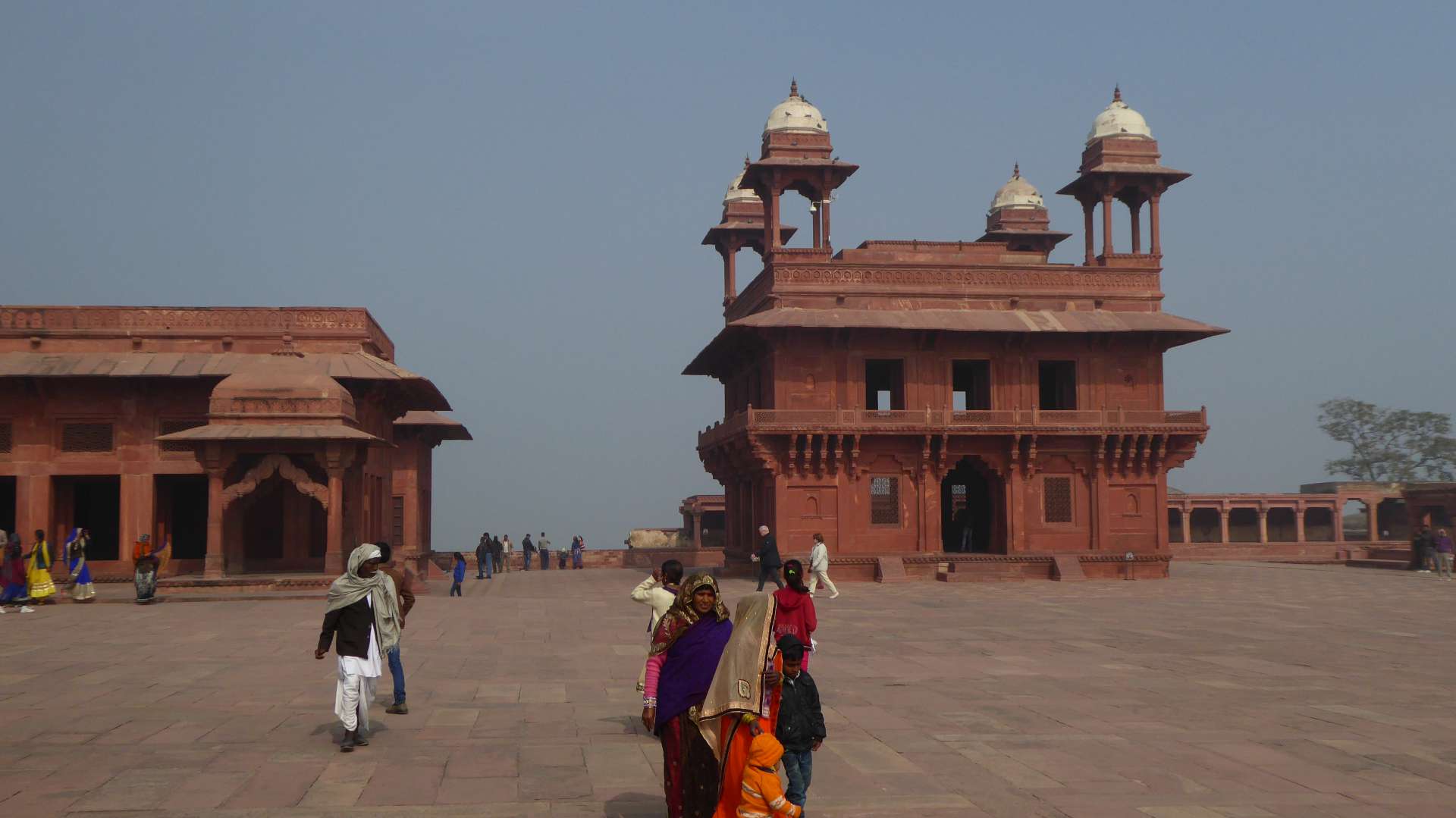
Afterwards, Mr. Khan wanted to start the drive back to the hotel and call it a day. But he hadn't counted on Don Curry. After all, he had done his research and knew about the impressive mosque of Akbar nearby. At first, Mr. Khan claimed that it was closed for renovation, but Don Curry's facial expression quickly taught him otherwise.
Although the mosque's dome was scaffolded, everything else could be easily visited and admired, as hundreds of people had already done before Don Curry. Mr. Khan quickly resigned himself to his fate and showed Don Curry the prayer hall as well as one of the largest gates in the world, and the highly revered tomb of a Sufi saint.
With so much immersion in the life and work of the great Akbar, it made a lot of sense for Don Curry to also visit his tomb, which is located in Sikandra, just outside the gates of Agra. This time, Mr. Khan immediately agreed to the additional program. Even before the Taj Mahal, the Mughals already had a great understanding of overwhelming architecture and impressive beauty. Akbar's tomb was no exception. Located in the middle of a huge park, a ramp leads down into the darkness of the now very simple whitewashed burial chamber. Here lies Akbar, known as "the Great," and with him his secret of coping with hundreds of women...

But Don Curry's time travel to the era of the mighty Mughal emperors was not yet over. Mr. Khan himself suggested visiting the so-called "Baby Taj," a small tomb for the great-uncle of the famous Mumtaz Mahal, who was immortalized in the Taj Mahal.

The building, actually called Itimad-ud-Daulah, already exhibits many of the characteristic features of its world-famous successor, but additionally offers a magnificent and well-preserved interior decoration. Moreover, it attracts significantly fewer tourists.

As the last item on the agenda for the day, Don Curry wanted to catch a first glimpse of THE destination in Agra, THE destination in India: the Taj Mahal. From an old garden, directly on the opposite bank of the river, this was possible. In addition, Don Curry could also catch a glimpse of the foundations of the black Taj Mahal, which Shah Jahan originally wanted to build as his own tomb, if his son had not deposed him prematurely. Today, he lies directly next to his beloved Mumtaz - and surely he is not sad about it...
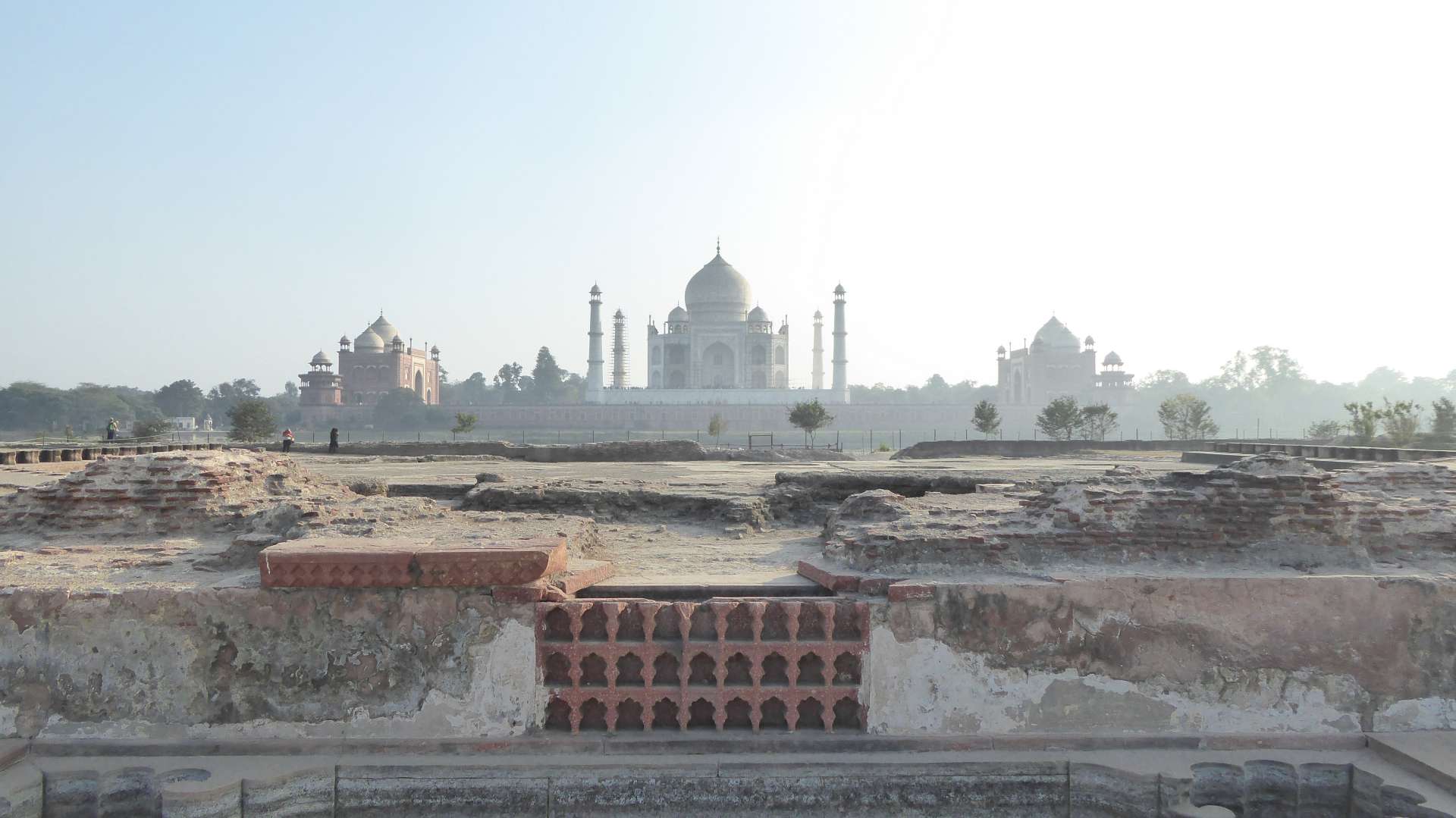
Checking in at the hotel turned out to be particularly difficult this time because of the missing passport. However, Mr. Benny personally promised that the passport, along with the jacket, would be returned to its owner tomorrow.
The restaurant was almost completely filled for dinner, which resulted in a high noise level. Don Curry was charged the equivalent of 8€ for a small can of Kingfisher beer, and he imagines that dinner in Akbar's time was certainly much more pleasant...
Გამოიწერეთ Newsletter
Უპასუხე
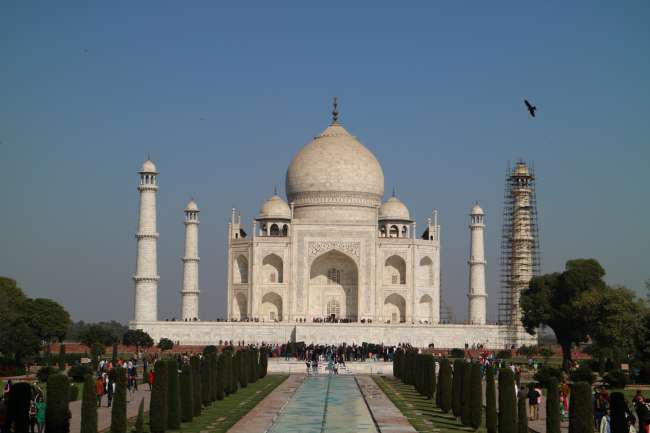
Მოგზაურობის ანგარიშები Ინდოეთი

